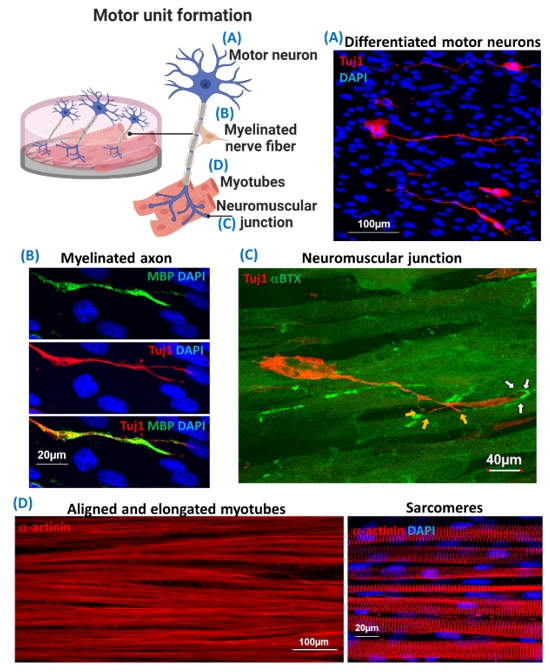學術研究分享-林育龍 助理教授

Think about the last time you reached out to grab a coffee cup or walked to the door. These everyday actions are powered by motor neurons and skeletal muscles, called the neuromuscular system. However, these simple actions can be a struggle for people with neuromuscular diseases (NMDs). The pathological mechanisms underlying most NMDs remain poorly understood, partly due to the lack of in vitro models that can comprehensively recapitulate multistage intercellular interactions and the physiological function of the motor unit (a motor neuron and muscle fibers it innervates).
Professor Yu-Lung Lin from Taipei Medical University has recently published their work in Cell & Bioscience. He innovatively designed a three-dimensional bilayer hydrogel tri-culture system, which can accurately reproduce the structure and function of motor units in vitro, by sequentially co-culturing and differentiating myoblasts, Schwann cells, and motor neurons on two specific hydrogel substrates. This system has promoted the orderly arrangement of muscle fibers, the formation of myelin sheaths, and the establishment of functional neuromuscular junctions (NMJs).

The importance of this research lies in providing a new perspective and tool for the study of NMDs. The tri-culture system can be used to investigate the basic biology of motor units and explore the pathologic mechanisms of NMDs, aiding in developing new therapeutic strategies. Moreover, because this model can reproduce MUs quickly and effectively without complex equipment, it opens up possibilities for applications such as disease modeling and drug screening, greatly enhancing research efficiency and feasibility.
Professor Lin’s research has opened new pathways for developing treatments for neuromuscular diseases. Establishing this model not only helps scientists better understand the disease’s progression but can also be used to test the effects of new drugs or treatment methods on neuromuscular units. Additionally, the high customizability of this model offers new possibilities for personalized medicine, with the potential to play a significant role in the fields of precision medicine and regenerative medicine in the future.




